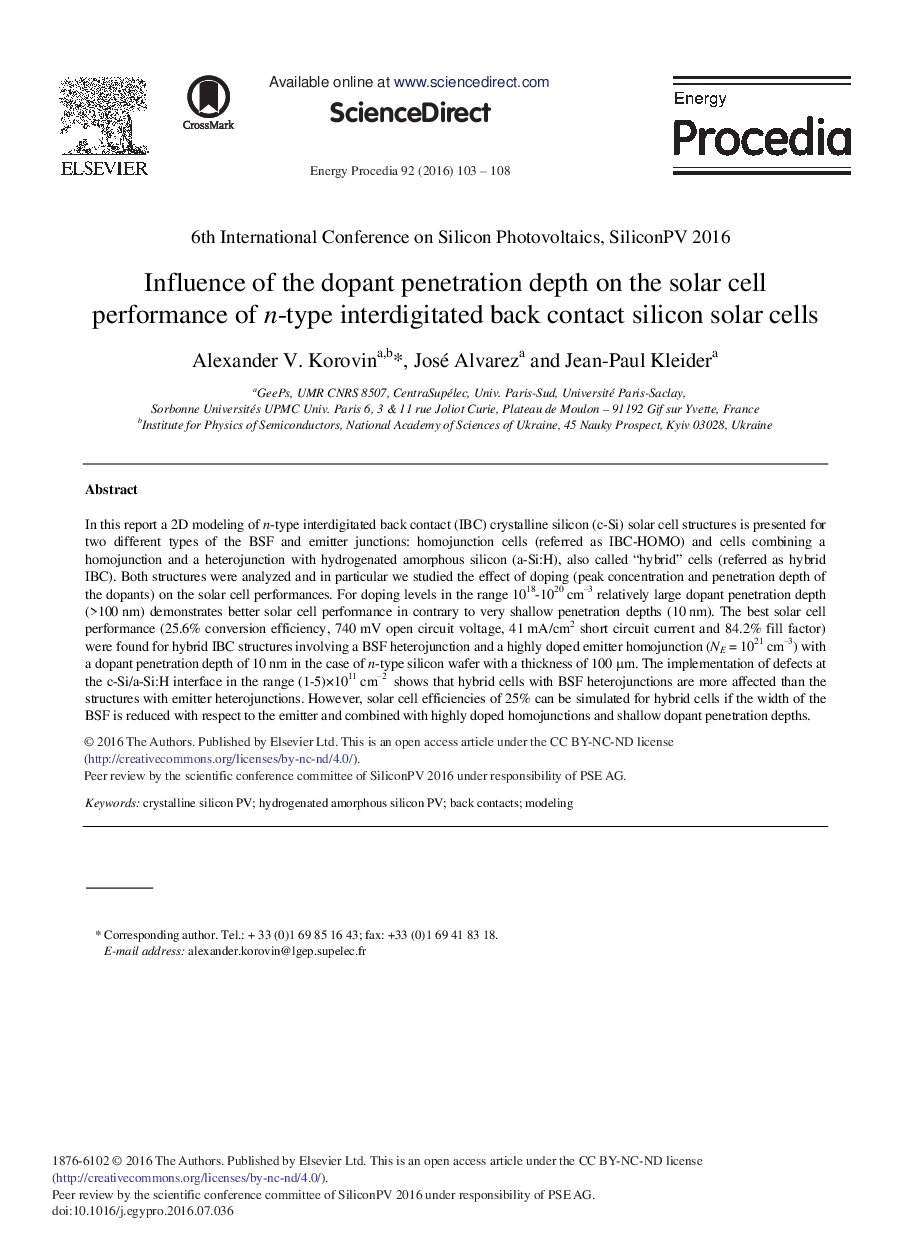| Article ID | Journal | Published Year | Pages | File Type |
|---|---|---|---|---|
| 5446565 | Energy Procedia | 2016 | 6 Pages |
Abstract
In this report a 2D modeling of n-type interdigitated back contact (IBC) crystalline silicon (c-Si) solar cell structures is presented for two different types of the BSF and emitter junctions: homojunction cells (referred as IBC-HOMO) and cells combining a homojunction and a heterojunction with hydrogenated amorphous silicon (a-Si:H), also called “hybrid” cells (referred as hybrid IBC). Both structures were analyzed and in particular we studied the effect of doping (peak concentration and penetration depth of the dopants) on the solar cell performances. For doping levels in the range 1018-1020 cm-3 relatively large dopant penetration depth (>100 nm) demonstrates better solar cell performance in contrary to very shallow penetration depths (10 nm). The best solar cell performance (25.6% conversion efficiency, 740 mV open circuit voltage, 41 mA/cm2 short circuit current and 84.2% fill factor) were found for hybrid IBC structures involving a BSF heterojunction and a highly doped emitter homojunction (NE = 1021 cm-3) with a dopant penetration depth of 10 nm in the case of n-type silicon wafer with a thickness of 100 μm. The implementation of defects at the c-Si/a-Si:H interface in the range (1-5)Ã1011 cm-2 shows that hybrid cells with BSF heterojunctions are more affected than the structures with emitter heterojunctions. However, solar cell efficiencies of 25% can be simulated for hybrid cells if the width of the BSF is reduced with respect to the emitter and combined with highly doped homojunctions and shallow dopant penetration depths.
Keywords
Related Topics
Physical Sciences and Engineering
Energy
Energy (General)
Authors
Alexander V. Korovin, José Alvarez, Jean-Paul Kleider,
